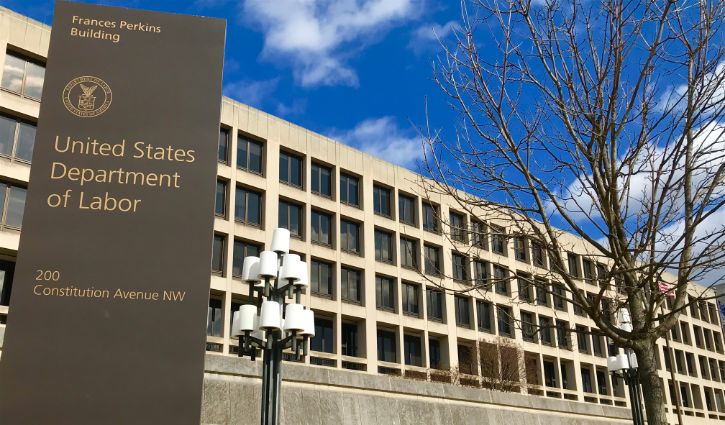On March 11, 2021, the U.S. Department of Labor (DOL) announced a proposal to rescind the independent contractor final rule. The final rule was published on Jan. 7, 2021 and is scheduled to become effective on May 7, 2021. The DOL’s position is that adopting the rule would significantly weaken worker protections under the Fair Labor Standards Act (FLSA). Although the final rule’s effective date has technically not yet been canceled, this proposal signals the DOL’s intention to roll back the worker classification test established by the rule at the end of President Donald Trump’s administration. As a result, employers should continue to monitor DOL communications on this topic for updates regarding worker classification obligations.
LINKS AND RESOURCES
- DOL independent contractor final rule
- DOL Wage and Hour Division worker misclassification website
- DOL Fact Sheet #13 – Employment Relationship Under the FLSA
Test Factors
- The nature and degree of control over the work;
- The worker’s opportunity for profit or loss based on initiative and/or investment;
- The amount of skill required for the work;
- The degree of permanence of the working relationship between the worker and the potential employer; and
- Whether the work is part of an integrated unit of production.
Important Dates
- Jan. 20, 2021 – President Joe Biden issued regulatory freeze on recently adopted laws.
- March 8, 2021 – Original effective date of independent contractor final rule.
- March 11, 2021 – DOL proposed to rescind the final rule.
- May 7, 2021 – Delayed effective date for independent contractor final rule.
[display_mode mode=”non-member-only”]Members login to access full article[/display_mode]
[display_mode mode=”member-only”]Importance of Worker Classification
Whether a worker is covered by a particular law or is entitled to receive a particular benefit often depends on whether the worker is an employee or an independent contractor. In general, employment laws, labor laws and related tax laws do not apply to independent contractors.
Misclassifying employees has become an increasing concern for governments, courts and regulatory agencies. Employers that misclassify employees can be liable for expensive fines and litigation if a worker should have been classified as an employee and did not receive a benefit or protection he or she was entitled to receive by law.
However, classifying workers as either employees or independent contractors is not always a simple or straightforward task. There is no single standard or test that applies to every situation where an employer will need to determine whether a worker is an employee who is protected by a particular law. As a result, courts and enforcement agencies have to rely on a variety of case law and regulatory guidance that change depending on the issue that brings the worker classification issue into question.
Commonly used tests for worker classification include:
- The Common Law Agency Test: The common law agency test assumes that, unless there is a definition for “employee,” “employer” and “scope of employment,” these terms are best understood in the context of the common law principles of agency. These principles, addressed by courts over time, focus on whether the employer has the right to control the work and how it is done. This test is generally used for purposes of worker classification under the Copyright Act, Employee Retirement Income Security Act (ERISA) and National Labor Relations Act (NLRA).
- The Economic Realities Test: The economic realities test requires a thorough analysis of the relationship between the parties, and evaluates the level of financial dependency that the worker has on an employer. Generally, under the economic realities test, the more an individual depends on an employer, the more likely it is that the individual should be categorized as an employee. The courts have favored this test when the term “employee” is used in a very broad sense—for example, in issues related to the Fair Labor Standards Act (FLSA) and the FMLA.
- The Hybrid Test: As the name suggests, the hybrid test combines elements of the common law agency and the economic realities tests. Though some lower courts have used this test to deal with issues related to Title VII of the Civil Rights Act, the Age Discrimination in Employment Act (ADEA) and the ADA, the Supreme Court has criticized this approach and is leaning more toward using the common law test for similar issues.
- The IRS Test: The IRS has also developed its own test regarding whether an employment relationship exists between a worker and an employer, for purposes of determining tax liability of employers and individuals. The IRS test is sometimes referred to as the control test, and it expands and classifies factors from the common law test into three categories—a sphere of behavioral control, a sphere of financial control and factors that determine the type of relationship that exists between parties.
Regardless of which test is used and the context of the particular situation, employers should remember that employment relationships are dynamic. Changes that occur over time in the relationship between the company and a worker may impact how workers should be classified. For this reason, employers should evaluate whether their independent contractors are adequately classified on a regular basis.
The Independent Contractor Rule
The 2021 Final Rule
The DOL issued the independent contractor classification final rule on Jan. 7, 2021. As published, the final rule was scheduled to become effective March 8, 2021.
This rule reaffirmed the use of the economic realities test for FLSA compliance. In issuing the rule, the DOL intended to provide a clear articulation of the economic realities test and its component factors, which it expected to lead to increased precision and predictability in the economic reality test’s application.
The factors used in the economic reality test are:
- The nature and degree of control over the work;
- The worker’s opportunity for profit or loss based on initiative and/or investment;
- The amount of skill required for the work;
- The degree of permanence of the working relationship between the worker and the potential employer; and
- Whether the work is part of an integrated unit of production.
While the traditional approach of this test gives similar importance to all five factors, the DOL rule favored the use of the first two factors—also called the “core factors”—as determinative or controlling in the outcome. The rule also considered the remaining three factors as additional guidance. However, the final rule also stated that actual practice, rather than contractual or theoretical agreements, is more relevant during the worker classification process.
Commentators on this rule have suggested that giving greater weight to the core factors would likely result in more workers being classified as independent contractors rather than employees. Of particular importance is the impact some expect this rule will have on the gig economy and their access to employee benefits and protections.
The Regulatory Freeze
Shortly after his inauguration, President Joe Biden issued a regulatory freeze on this and other regulations adopted during the last few weeks of the Trump administration.
This freeze imposed a delay for the enforcement or effective date of agency rules and guidance to allow government officials sufficient time to determine whether these rules and guidance align with the policies of the Biden administration. This type of regulatory freeze is not uncommon when there is a change of political party affiliation at the highest levels of government.
The Delay and Proposal to Rescind
As a result of the regulatory freeze, on March 4, 2021, the DOL delayed the final rule’s effective date from March 8 to May 7, 2021.
A week later, on March 11, 2021, the DOL announced a proposal to rescind the independent contractor rule. With the proposal, the DOL stated its opinion that implementing the rule would significantly weaken worker protections under the FLSA. Specifically, the DOL found that using this modified version of the economic reality test would narrow or minimize the importance of factors historically relevant in a comprehensive approach to evaluating whether an employment relationship exists.
Download PDF [/display_mode]












